- Hotline: 852+ 2891 9689
- Whatsapp: 852+ 9146 8426
- [email protected]
- 6/F 29 Austin Road, Tsimshatsui, Kowloon, Hong Kong
Hair transplant surgery involves extracting healthy hair follicles from a donor area (usually the back of the head) and relocating them to areas of thinning or balding. There are three primary methods to harvest these follicles, each with unique advantages depending on your needs, hair type, and long-term goals:
This modern, minimally invasive technique extracts individual follicular units using a micro punch tool. It leaves no linear scar, offers faster healing, and is ideal for patients who prefer short hairstyles or want a more comfortable recovery. It is our most commonly used method today. Based on this we have developed our own technique to achieve higher density coverage – FUE-HD.
This traditional method removes a narrow strip of skin from the donor area, from which follicular units are dissected under a microscope. Though it leaves a linear scar, it may offer more grafts in a single session and is suitable for patients who wear longer hairstyles and need large numbers of grafts.
For those needing maximum graft numbers or planning multiple sessions, combining FUT and FUE in one procedure can optimize donor usage, preserve long-term options, and minimize visible impact. This technique is especially useful in advanced hair loss cases or for strategic donor preservation.
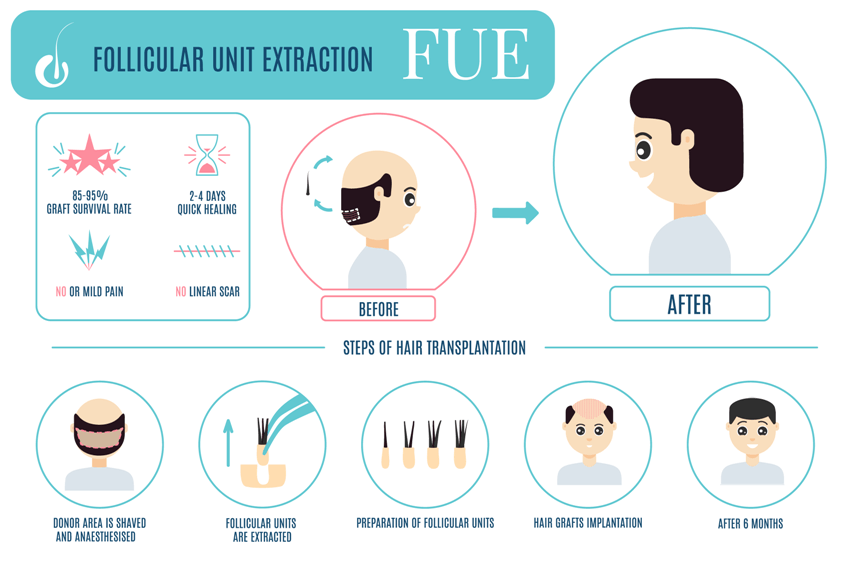
Follicular Unit Excision (FUE) is a modern, minimally invasive hair transplant technique where individual hair follicles are carefully extracted one by one from the donor area (usually the back of the scalp) and transplanted to areas affected by hair loss. It requires no scalpel or stitches and leaves only tiny dot-like scars that are barely noticeable.
No stitches, minimal scarring
Faster healing and shorter downtime
Flexible for small or large areas
Can be used for body-to-scalp hair transplant
Time-consuming for large sessions
Slightly higher cost than strip surgery (FUT)
Donor area may need to be shaved
Risk of graft transection if not performed by skilled hands
The idea of extracting individual hair follicles instead of a strip emerged in the late 1990s. However, early attempts using biopsy punches often caused high transection rates, scarring, and low graft survival. The technique lacked precision and consistency, so it was not widely adopted.
The term Follicular Unit Extraction was formally introduced in 2002 by Drs. William Rassman and Robert Bernstein. They published a landmark paper proposing the concept of extracting naturally occurring follicular units one by one using small punches (typically 1mm or less). This marked the beginning of FUE as a recognized alternative to FUT (strip surgery).
Despite its potential, early FUE faced skepticism:
Punches were not refined
Transection rates were high
It was extremely time-consuming and technically demanding
Only a few clinics, including ours in Hong Kong (since 2006), committed to refining FUE, especially for Asian hair.
Improved punch designs (sharp, blunt, serrated), motorized handpieces, and better magnification helped reduce graft damage and increased the speed of harvesting. Doctors began experimenting with body hair and facial hair as additional donor sources.
As results improved and tools advanced, FUE became more accepted:
ISHRS began offering hands-on FUE workshops
Clinics started offering FUE exclusively
Use expanded to eyebrow and beard restoration
Our clinic contributed to global training by publishing the first article focused on FUE in Chinese patients (2009) and performing live demonstrations across Asia.
Robotic FUE systems like ARTAS emerged but were limited to specific patient types
Our clinic introduced the Sequential FUE Technique (Double Gun Technique) in 2018, honored by ISHRS for innovation
Custom tools like our Funnel Punch helped further reduce graft transection, even in challenging Asian hair
Today, FUE is the most requested hair transplant technique worldwide due to its minimal scarring, fast healing, and natural results — when done properly.
FUE is suitable for:
Men and women with pattern hair loss
Individuals with adequate donor hair
Those who prefer to wear short hairstyles
Patients seeking to avoid a linear scar from traditional strip surgery
It’s also ideal for those needing eyebrow, beard, or scar correction.
The 1st Generation FUE was introduced as an alternative to strip harvesting in FUT. Follicular units were directly punched out one-by-one from the donor scalp. It is a modification of the old school Punch Graft used by Dr Orentrich, except a 0.8 to 1.0-mm diameter smaller punch was used instead of a 4mm biopsy punch.
It has 5 disadvantages:
1. Limited Number of Grafts unable to achieve High Density Grafting
2. Graft Damage ( Transection ) during Punch Harvesting
3. Unsightly Donor Areas ( Dotting, Thinning, and Mottling )
4. Long Surgery Time and Slow Recovery
5. Expensive
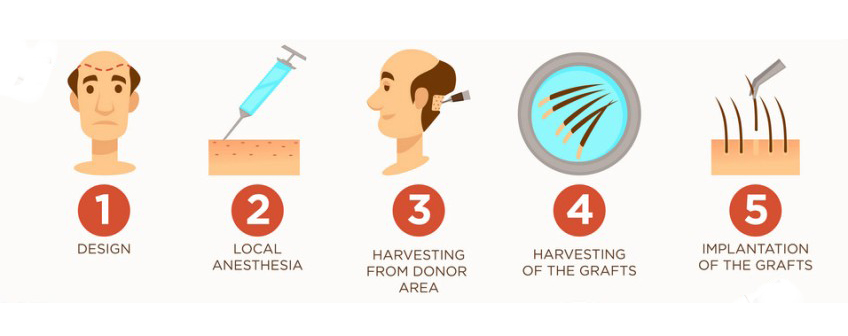
Confusion exists when the same technique comes with different names, mostly for the purpose of marketing as a unique or even secret technique. No matter what it is called, the basic principle of graft isolation remains the same. FUE can further be classified according to the instrument used to extract the follicles:
The first surgeon performing FUE was believed to be Dr Wood in Australia, who kept his technique a secret.
Dr Inaba (Japan) described the same technique in his 1996 textbook “Androgenetic Alopecia”.
The term FUE was introduced by Dr. Rassman and Bernstein in 2002 in the United States, which gained popularity all over the world
Many hair transplant centers promotes FUE as a non-surgical procedure. In March 2018 the International Society of Hair Restoration Surgery (ISHRS) renamed FUE from Follicular Unit “Extraction” to Follicular Unit “Excision”. The reason was to emphasise the highly-skilled, surgical nature of the procedure.
We deeveloped this technique in 2008 and called it “Double Gun Technique”, when one hand performs the incision while the other hand immediately extracts the graft. It was later become popular in Europe. ISHRS FUE Committe later re-named this a ” Sequential Technique”.
Developed by Dr John Cole (USA) using his devoce and indtrument
When extraction performed by hands only
When extraction is by hand and assisted by electric device
When extraction is by electric device only
It stands for extraction using a Robotic arm and setup
Precision, Density, and Donor Preservation in One Day
“HD” stands for High Density. In recent years we have combined and modified the Europen-USA FUE techniques to accommodate for high density implantation. The incisons are smaller with much less bleeding and trauma to the recipient site. This markedly reduces the downtime, and patients can resume normal activities just after a few days.
Our FUE-HD is a breakthrough that has overcome the above drawbacks of traditional FUE. Rather than just a technique extracting and re-implantation hair follicles, this is a system combining the latest technique and bio-technology.
This 3rd Generation FUE-HD represents our commitment to whole-person caring using 7 key Elements to achieve the 3 objectives:
In a typical FUE-HD session, we extract between 2,400 to 3,600 hairs, depending on donor hair density, scalp characteristics, and target area.
Our advanced FUE-HD technique features:
We designed FUE-HD not to race through surgery—but to deliver quality, consistency, and survival.
We routinely extract 2,500–3,500 hairs per session for Asian patients and more for Caucasians, depending on donor density. Our record: 5,500 hairs in one sitting.
The optimal extraction window is 2–4 hours, followed by implantation within 2 hours. Total procedure time: ~5 hours. We never rush—we protect your grafts by balancing timing and technique.
We do not perform multi-day procedures. Why?
Repeated anesthesia injections increase risk and pain
Additional trauma disrupts blood supply, threatening graft survival
Implants on Day 1 may be damaged during Day 2 extractions
Lying face down two days in a row causes undue fatigue
Graft counts are harder to control on Day 2


Unlike traditional FUE, FUE-HD minimizes graft trauma. We offer the highest density possible—without sacrificing survival.
More grafts surviving = fewer needed. Most clinics charge per graft transplanted—not per graft that grows. Our high survival rate means better value and results.
With more viable grafts, a high density Implant & better result can be achieved at a reasonable cost.
Hair follicles are non-renewable. Once depleted, they’re gone.
We treat follicles like mini-organs—fragile and irreplaceable
Our approach reduces “H-Factor” (human error) and “X-Factor” (unknowns)
85% growth is required to be considered successful—we consistently exceed that
Even if cloning is available in the future, it won’t be cheap. So why not put more thought into how to properly utilize your limited number of permanent hair follicles and avoid wastage.
For maximum harvest in a single sitting, we combine FUE-HD with FUT — especially beneficial in large-scale restorations.
Scars happen—but not all scars are visible.


FUE-HD uses ultra-small 0.8mm punches and direct implantation to:
Create clean wounds that heal faster
Reduce inflammation and trauma
Allow patients to resume normal appearance within 1 week
We prevent patchy or moth-eaten donor sites by:
Using wide extraction zones to evenly distribute punches
Avoiding over-harvesting in any single area
Offering camouflage with Scalp Micropigmentation (SMP) if needed
Thanks to strict hygiene and sterile technique, we’ve maintained an infection rate below 1% for seven years—without relying on antibiotics.
Precision. Flexibility. No Linear Scar.
FUE-HD has become the preferred method for over 85% of our patients—offering excellent results with minimal downtime and no linear scarring. Here’s who benefits most:
If the idea of a surgical cut (as in FUT) feels intimidating, FUE-HD offers a suture-free alternative. Our patients appreciate the gentle, scalpel-free experience with fast recovery and less discomfort.
Whether you prefer a buzz cut, skin fade, or military-style crop, FUE-HD is your only real option. Its tiny punch incisions heal with minimal visible scarring—ideal for keeping the back of your head clean and natural-looking.
With our ultra-fine 0.8mm punch, FUE-HD reduces trauma and significantly lowers the risk of visible scars or keloid formation, making it safer for those with sensitive skin types.
When donor hair is sparse, FUT can leave visible scars even under long hair. FUE-HD avoids this issue by spreading extractions across a wider area, maintaining aesthetic integrity.
For younger clients or those only needing a few hundred grafts, it’s simply not worth leaving behind a permanent linear scar. FUE-HD is ideal in these cases—and we can even perform it without shaving the entire donor area.
If you’ve already had strip procedures, or if your scalp is too tight or thin to safely remove a strip, FUE-HD provides a second chance at restoration—without the limitations of FUT.

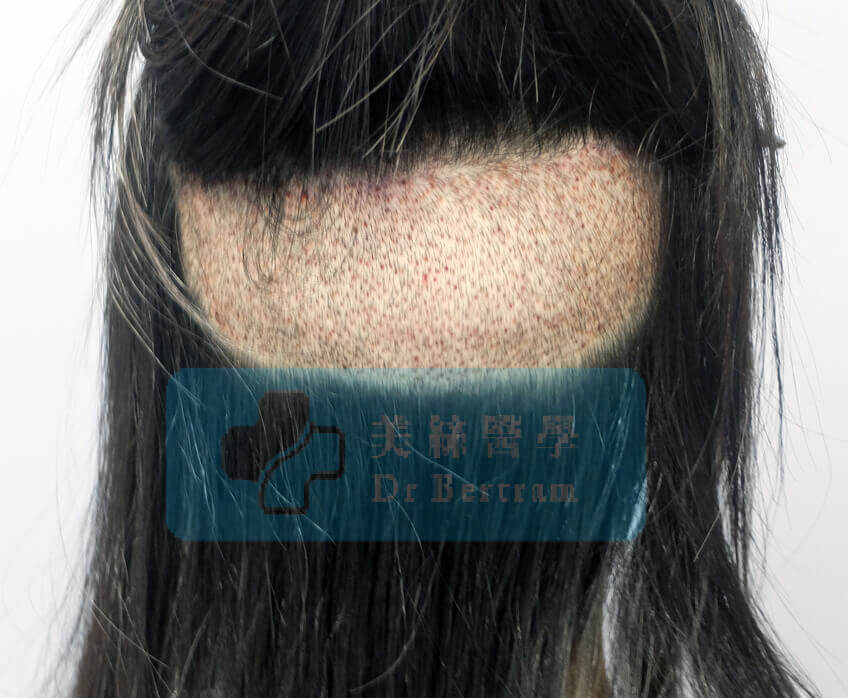
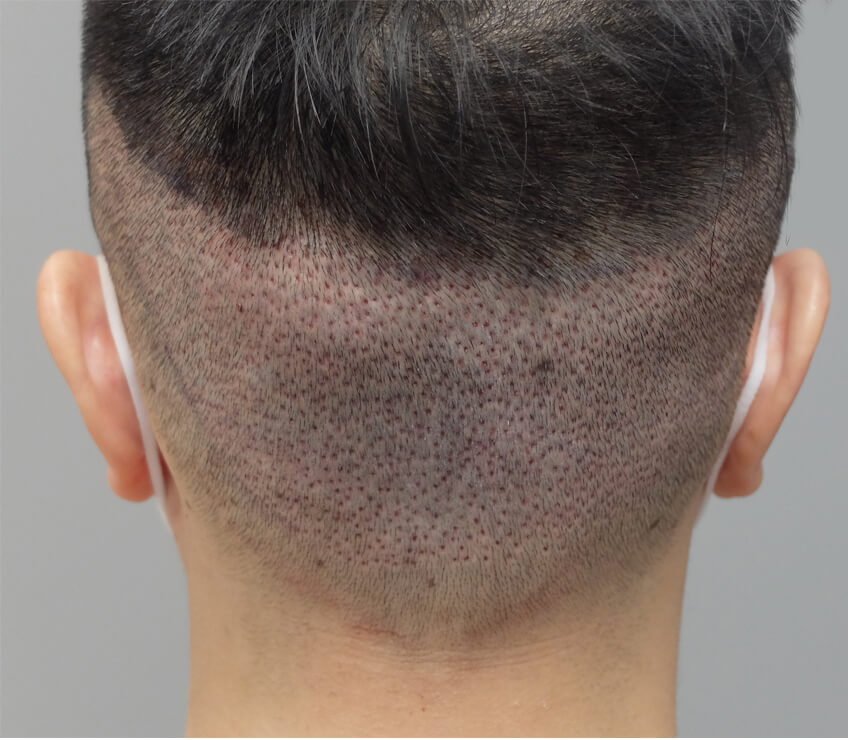

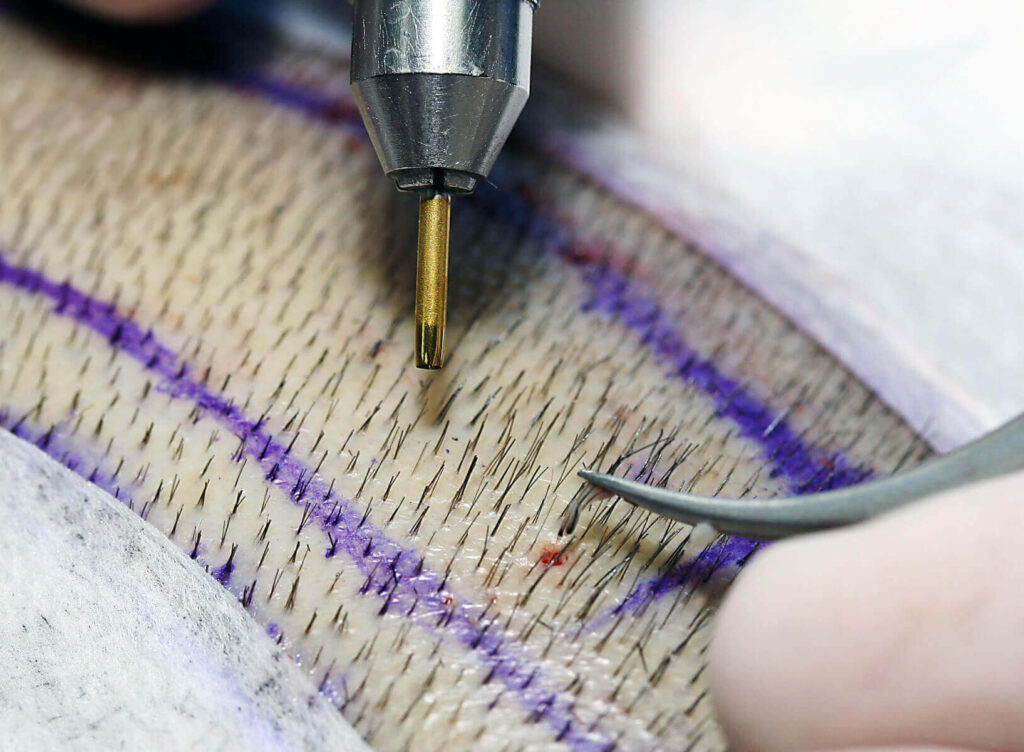
Graft transection is the main drawback in FUE. In 2017 we started to develop our own punch, Our punch has a wider opening in the shape of a funnel, and is known as the “Funnel Punch”.
This markly reduces the graft transection rate. In 2017 our punch was on producion and now used by hair transplant surgeon all over the world.

After learning Dr John Cole (USA) CIT System, Dr Umar (USA) U-System, Dr Devroye (Belgium) WAW System, Dr Trivellini (Italy) Mamba Device, and many other technique and devices in the last 14 years, we feel that the human touch is as important as any latest technology.
We combine both manual and automatic extraction to cater for different skin texture and hair characters.

We first presented this Key Area Transplant Approach in ISHRS Annual Scientific Meeting ( Bahama ) back in 2010. The concept is that you don’t need hair in every part of your balding scalp to look good.
Instead hairs are implanted along the hairline and parting side to comb over. This approach allows a larger area coverage using a lesser number of grafts. Patients can always return for a second procedure to extend the coverage.

In 2018 we had developed a new technique using both hands for excision and extraction simutaneously to reduce the graft harvesting time. This so-called “Double Gun Technique” was first presented in the 2008 ISHRS Annual Scientific Meeting in Montreal, Canada,
In 2018 the ISHRS FUE Committee re-named it “Sequential FUE Technique”. Our technique is currently used by many doctors in Europe.

With our skill we are able to cut a 3 or 4-hair follicular unit longitudinally into 2 intact halves. One half is removed for re-implantation as usual, while the other left behind to regrow.
Studies had shown that the remnant can regenerate completely. This technique has the potential to generate two hair follicles from one follicle with consistent results and preserve the donor area.
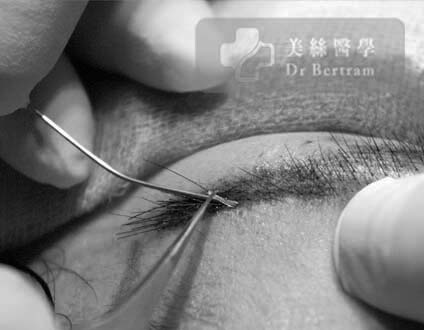
Grafts outside the body has a limited survival time and must be implanted ASAP. We have abandoned the use of implanters as they produce more tissue trauma by squeezing the graft into a metal tube, and with a bigger wound.
Instead we use forceps to grasp the shaft and inserted the graft into a snug-fit holes as 1 step without touching the fragile root. This allows for denser packing.

The final result of hair transplant depends on how many grafts actually re-grow after the procedure. Damaged hair follicles may not produce new hair. Our FUE -HD combines the followings to enhance graft survival :
• ATP Energy Spray and Storage Solution
• Low Level Laser Therapy
• Tricomin Copper Peptide Hair Solution

FUT stands for Follicular Unit Transplant. The technique was first described in 1984, when individual hair follicles resistant to the thinning effect of DHT (Dihydrotesterone) are transferred from one area (Donor Site) to another (Recipient Site).
The Recipient Areas can be any part of the body, usually the balding scalp, eyebrow, beard, chest, or even pubic areas. FUT is also known as:
As it involves the surgical removal of a narrow strip of hair-bearing skin tissue from the back and sides of the scalp. This piece of tissue is then dissected under microscopes into smaller grafts. The grafts are then meticulously planted into skin pockets ( the slits ).
Some centers called it Follicular Unit Strip Excision ( FUSE ) but this name is not popular.

We have been providing hair transplannt for doctors, lawyers, CEO, professors, or even judge of the High Court. FUT is the best option to cater for their special requirements:
In 2008 we had one year apprenticeship with Dr Damkerng Pathomvanich, learning his personal FUT technique known as “Open Technique”. While working as a Plastic Surgeon in America, he learned FUT from Dr Stough (Little Rock, USA). After returning to Thailand he modified the technique to cater for the Asians hair.
He was the authors of 2 textbooks that focus on Hair Transplant in Asians. He received two Gold Follicle Awards from both ISHRS and AAHRS for his achievement. In 2009 he viited Hong Kong to supervise the setup of our center.
Our FUT method incorporates advanced international protocols:
After 10 years of refinement our FUT-Strip technique has the following features:

Scar formation is unpredictable. Invisible scar cannot be guaranteed in all cases. Over the years hair transplant surgeons have tried many methods to achieve the “invisible” scar in the donor area. The followings are the 3 techniques we use to minimize donor scar:
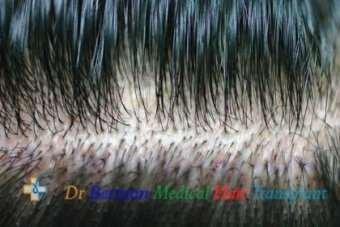
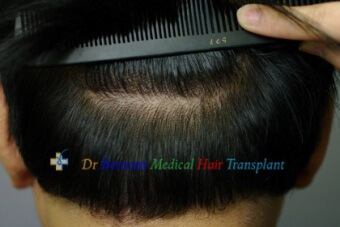
Transection is the accidental damage to the hair follicle by sharp blade during harvesting and graft cutting. To survive, the mid-portion (contains stem cells) must be intact.
To compensate for wasted graft a wider strip must be excised. The increase of few minimeter can make a big difference to the wound closing tension.
Smaller strip means lesser scar, so we reduce strip size by:
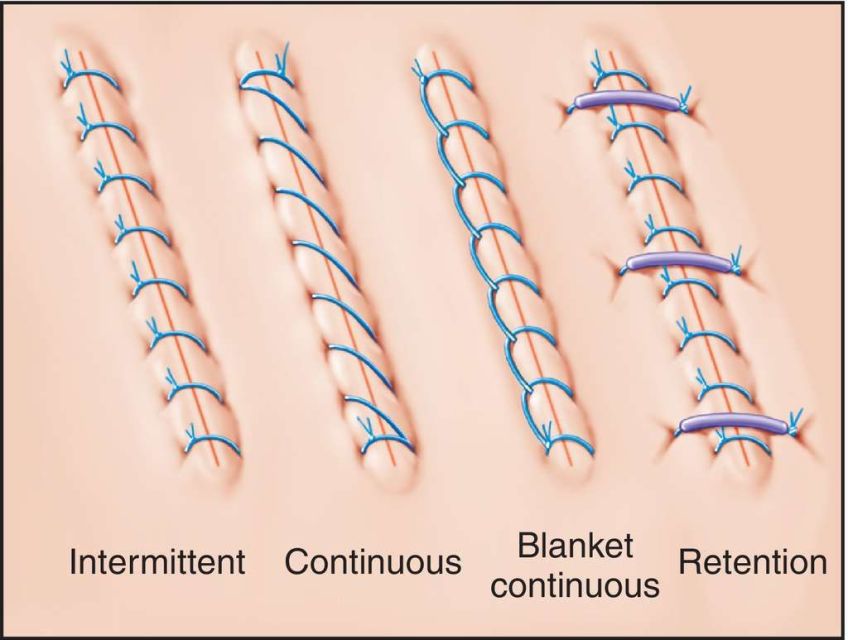
This technique create mechanical creep for tension free closure, and allows close approximation of wound edges. It has been used in abdominal surgery for decades. Dr Pathomvanich (Thailand) adopted the technique into donor wound closure.
Satisfactory results have been observed in more than 1,000 cases. Stitches can be removed as early as day 5. No unsightly stitch marks were left in most cases. Even tight wound can be closed without tension. This technique leaves no buried stitches so there is less tissue reaction and better scar formation.
Sutures should be kept long enough for proper healing. Forceful or jerky movement of the neck should be avoided for the first 4 weeks. Topical Silicone, Vitamin C preparation and steroid have all been advocated.
3 techniques are available in our center to reduce size of scalp scar:
The advance of Scalp Micropigmentation has made it the preferred choice in most cases. Also it changes our preference for hair transplant technique, when FUT making a return.
The downside of FUT, the linear scar at the back of the head, can now be easily fixed by SMP, leaving the patients with the option of wearing skin head even after a FUT procedure.
We might possibly be the Only Centre in Hong Kong that Offers COMBO GIGASESSION

The FUE + FUT Combo technique combines Follicular Unit Excision (FUE) and Follicular Unit Transplantation (FUT) in a single or staged procedure. It is a strategic approach used when maximum graft yield is required while preserving donor area integrity.
Instead of relying on one method alone, this combination leverages the strengths of both techniques to achieve better coverage, density, and long-term flexibility.
The FUE + FUT Combo is an advanced surgical plan best performed by an experienced team. At our clinic, we tailor this approach for suitable patients to ensure maximum graft survival, natural results, and future flexibility.
FUT (Strip) First: A strip of scalp is removed from the back of the head, and grafts are dissected under a microscope. This leaves a fine linear scar.
FUE Harvesting Next: Additional grafts are extracted from around the strip zone using a small punch. The distribution is carefully planned to avoid overharvesting.
Graft Placement: All grafts are placed in the recipient area using the same method, regardless of how they were harvested.
This may be done in one day or two separate days, depending on the total number of grafts needed and patient comfort.
This technique is best suited for:
Men with advanced hair loss (Norwood Class V–VII)
Patients requiring over 3,500 grafts in one or two sessions
Individuals with moderate donor density, where FUE alone would exhaust the donor area
Patients with previous FUT scars who still have good surrounding donor zones
Patients seeking repair procedures or full restoration including crown coverage
Maximum Graft Yield in a single surgical plan (4,000–5,000+ grafts)
Donor Preservation: Less trauma to scalp compared to mega-FUE alone
Efficient Use of Scalp Zones: FUT harvests from the center; FUE from surrounding areas
Better Coverage: Allows simultaneous restoration of hairline, mid-scalp, and crown
Great for Repair Cases: Offers flexibility when donor zones are partially used
More Invasive: Involves both a linear scar and multiple small extraction sites
Longer Procedure Time: May take a full day or staged over two days
Requires Expert Skill: Not every clinic is experienced in both techniques
Slightly Longer Recovery: Due to healing from both types of donor wounds
FUT |
FUE-HD |
|
|---|---|---|
| Good Candidate |
• Not Want Shaving • Extensive Balding Areas • Requests minimal downtime • Medium length hair style • Tight in Budget • Women |
• Most cases in Men • Very tight scalp • Previous Hair Transplant • Wants to keep short hair • Do not want Scar or Keloid-prone • Donor hair mixed quality |
| Unit for Estimating Cost | • Per Graft | • Per Hair ( Usually 1.8-2 hair per graft ) |
| Donor Area Shaving | • No Need | • Necessary |
| Harvesting Technique | • A strip of hair-bearing skin is excised • Follicles isolated under microscopes • Wound closed with 2 layers of suture • Measures to minimize donor scar |
• Follicles are punched out one by one • Punch diameter 0.8mm • Only good follicles are extracted • Requires a larger donor area |
| Area Covered | • Medium to very large | • Small to medium |
| Size of Graft | • 0.8 - 1.2 mm in diameter | • 0.7 - 0.8 mm in diameter |
| Graft Per Session (Average) |
• 1,800 - 2,800 Grafts • ( 3,200 - 5,000 Hair ) |
• 1,200 - 1,800 Grafts • ( 2,800 - 4,200 Hair ) |
| Graft Per Hour (Average) |
• 1,800 Graft ( 3,200 Hair ) | • 1,000 Graft ( 1,800 Hair ) |
| Our Top Number | • 4,500 Grafts • ( 9,000 Hairs ) |
• 2,500 Grafts • ( 5,500 Hairs ) |
| Quality of Grafts | • Good | • Better |
| Graft Transection | • 1 - 2% | • 1 - 2% |
| Pain | • No Pain during Procedure | • No Pain during Procedure |
| Impanted Density | • High | • Higher than FUT ( As Grafts are Smaller ) |
| Suture Removal | • Yes, after 5-7 Days | • No Need |
| Scar | • Linear scar, covered with hair | • Numerous small white dots |
| Donor Thinning | • No | • Not after 1st procedure |
| Resume Exercise | • After 2-3 Weeks | • After 1 Weeks |
| Common Complications | • Shock Loss ( Hair Shedding ) | • Numbness & Folliculitis |
| Recovery | • Tightness donor site 1st Week • Subsided after Stitches Removed |
• Numbness donor site for weeks • Slowly back to Normal |


It has long been believed that FUT (strip) grafts, which retain more surrounding fatty tissue, offer superior survival because fat:
Prevents dehydration of the follicles outside the body
Protects the dermal papilla, the critical growth center of the follicle
Contains stem cells, essential for post-transplant regeneration
This led to the common assumption that “chubbier grafts mean better survival” — favoring FUT as the superior method.
After more than 7 years of clinical observation, our experience tells a different story.
In our clinic, FUE-HD grafts consistently match or outperform FUT grafts in terms of growth, especially along the hairline. Here’s why:
With FUE, we can selectively harvest only high-quality follicular units, especially those with 2–3 hairs per graft. This improves final density and natural appearance. In contrast, FUT forces us to use all extracted grafts, including weaker, fine, or 1-hair follicles with lower survival potential.
Today, advances in biotechnology have minimized the importance of surrounding fat. Tools that preserve and enhance follicle health include:
ATP-enriched spray and storage solution – Supports cellular energy while grafts are outside the body
Low-Level Laser Therapy (LLLT) – Promotes healing and follicle activation
Copper peptide supplementation – Encourages growth and reduces inflammation
These innovations reduce the reliance on fatty tissue to protect the follicle.
Interestingly, we’ve observed that too much fat surrounding FUT grafts may impede nutrient perfusion during implantation — particularly if the tissue dries out. This may explain why FUE grafts, despite being leaner, perform better when handled and preserved correctly.
FUT – Patients can resume work the next day without being noticed.
FUE – Even though the donor area needs to be shaved in FUE-HD, the 0.8mm punch holes heal rapidly and most patients cam return to work after one week. The other option is to undercut (partial shave) instead of total shave.

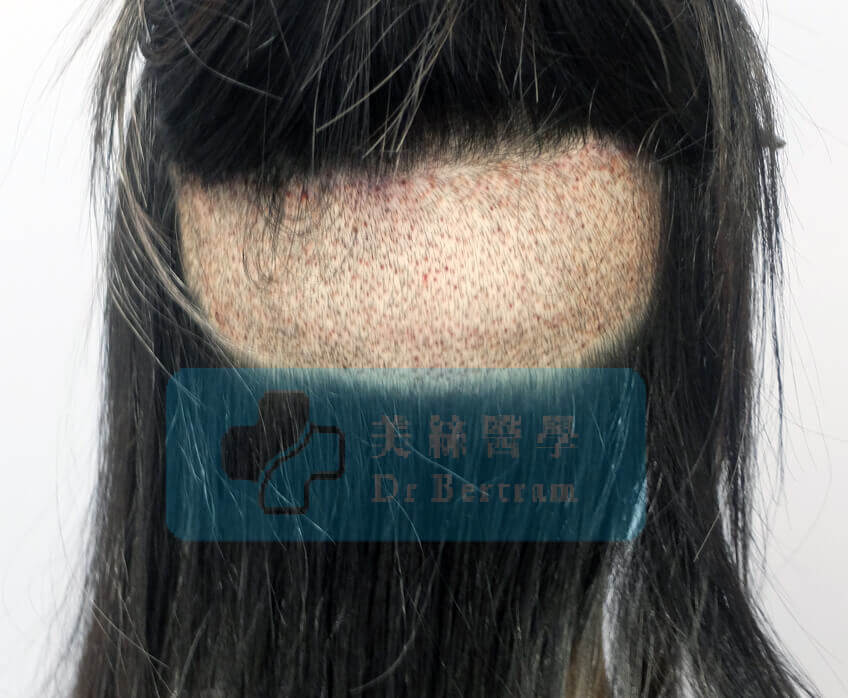
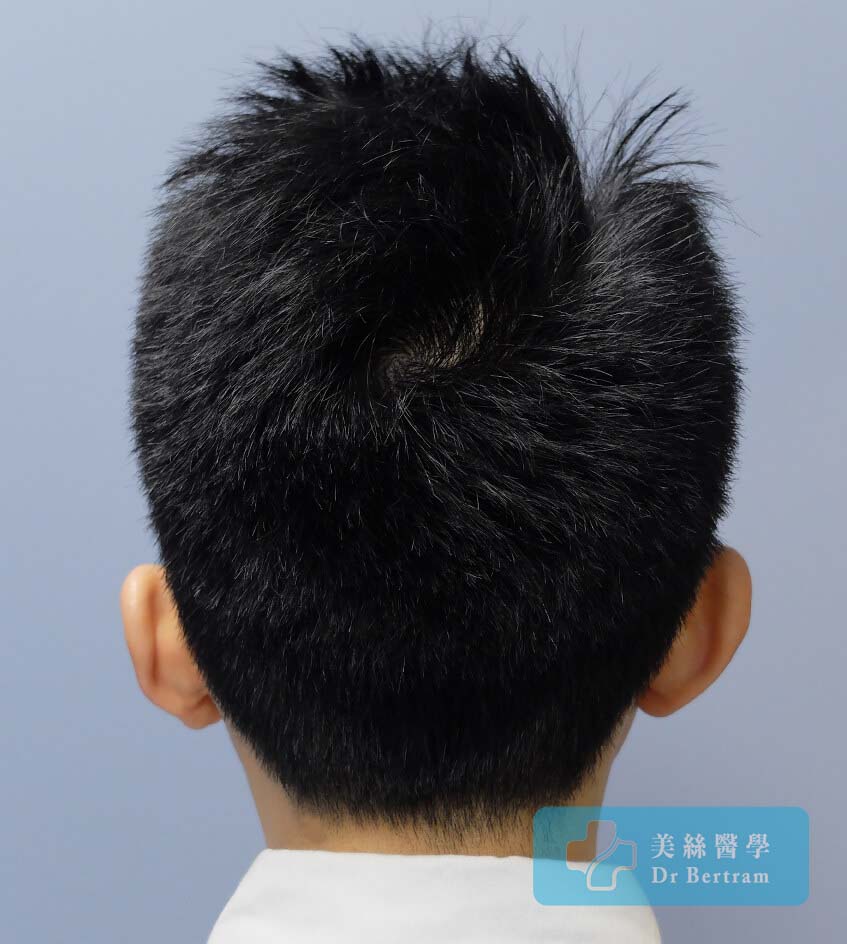
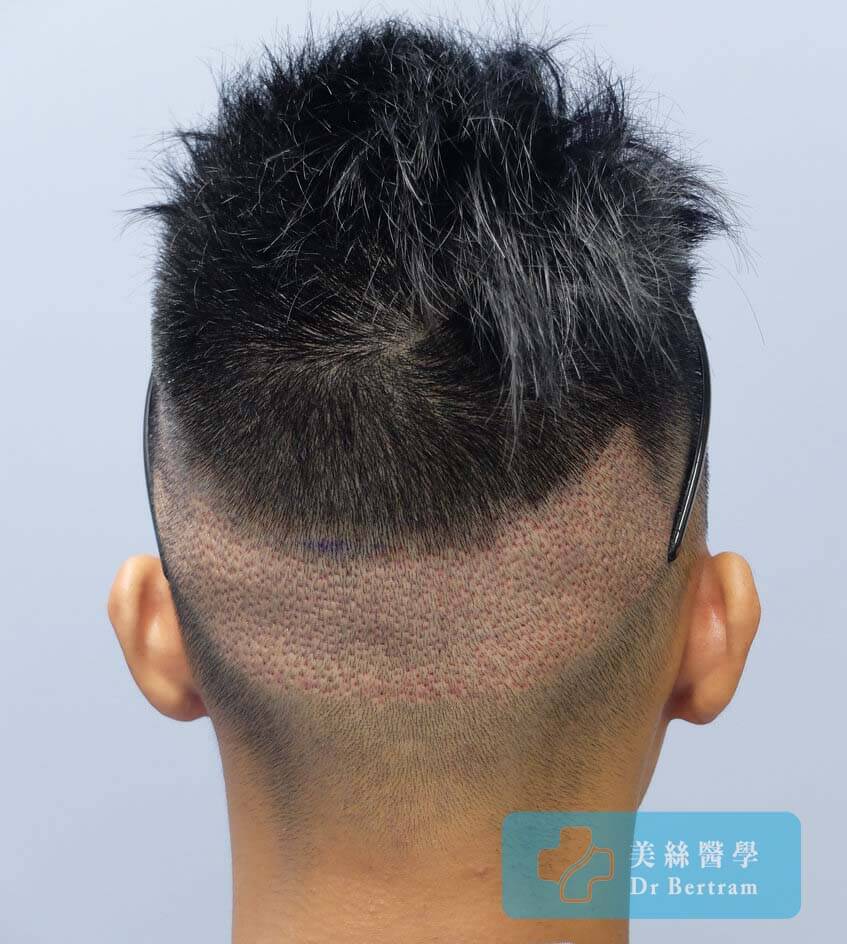
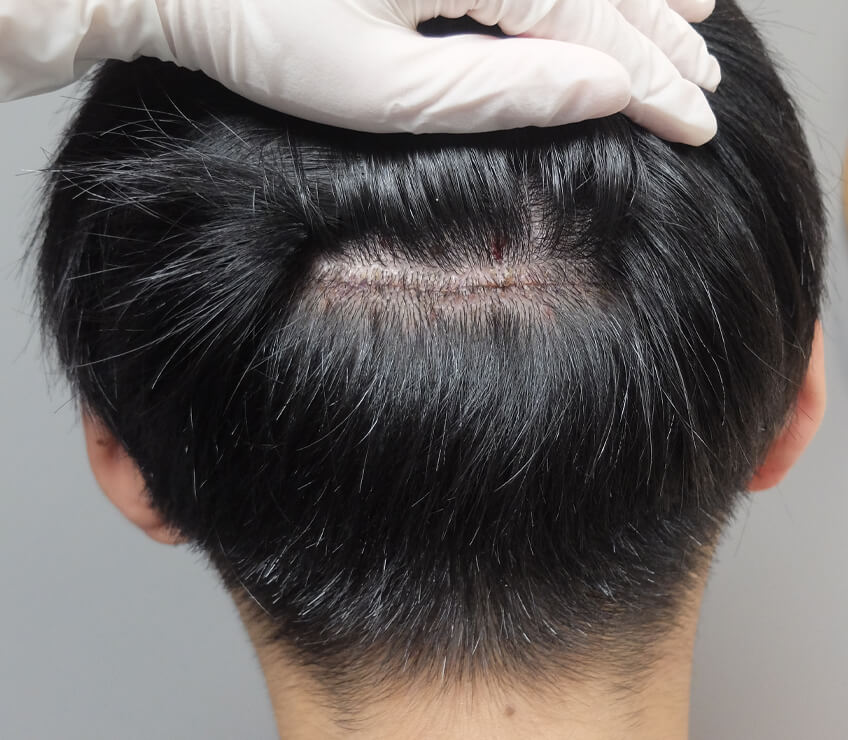
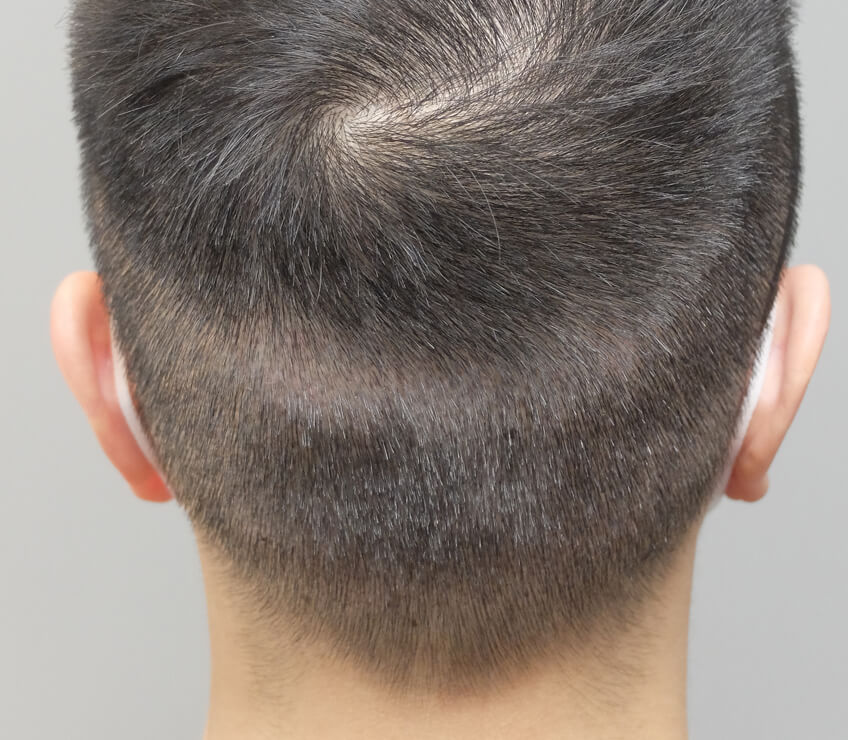
FUT-Strip technique creates linear scar, on average 2-3mm in width. It can be covered by just 1 cm of hair.
Tiny white dots are visible only on skin head. Donor thinning very uncommon after one procedure.

Which is a better choice? Your best option can only be recommended by a properly trained hair transplant surgeon who offers FUE, FUT, and COMBO.

From consultation, surgery, to aftercare, you will receive continued personal care by our doctors, not just consultants.
Have a question? Please feel free to call our friendly customer service.
International Accreditations
Recognized by leading global medical bodies, our clinic stands as one of the most qualified and internationally accredited hair transplant centers in Hong Kong and mainland China. We are proud to uphold the highest standards in medical ethics, safety, and surgical expertise.
Hair transplant is the ultimate solution to restores hair, but not everyone is good candidate.
Our online assessment helps determine if these procedures suit you, saving you time and costs.